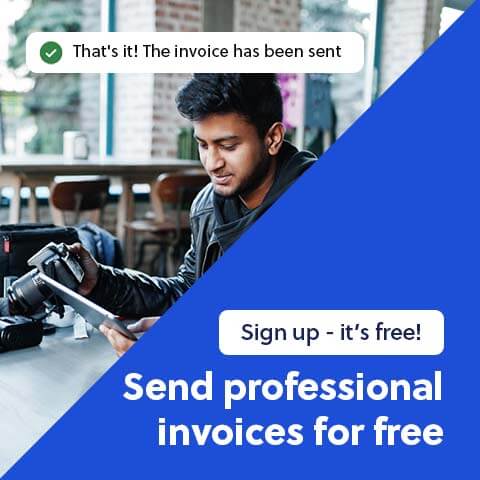It’s never fun waiting for payment. But did you know there’s actually several easy things you can do to get paid fast? Let’s take a look.
When you invoice for your products, services, or your time, there’s usually a period of waiting before the money hits your bank account. Using these tips and tricks to get paid fast is great for you and your business—it lets you buy necessary supplies, pay your bills, and move on to new projects.
1. Agree terms with the client
You should have a contract or some form of written agreement that outlines the terms of the sale. It doesn’t have to be complicated, but make sure you include information about what you’re delivering, returns and warranties, as well as your payment terms.
Here’s suggestions for what to include in your contract or agreement:
- The parties involved: List the buyer and the seller
- Products and services: Describe what’s being sold
- Payment details: Include the price, acceptable payment methods, due date, and late payment penalties, if applicable
- Delivery date: Specify the delivery date, and—in case you’re shipping—who will pay for shipping, who is responsible for delays and damages, and how long the client has to inspect the goods once they’ve received them
- Return policy: The deadline for returning goods, what condition the goods should be in, information about how to return items
- Warranties: Information about the duration of the warranty and what’s covered, how to claim warranty
There are many more things you can include, so make sure to tailor it to your needs.
2. Ask for payment upfront or when you deliver the goods or services
Did you know you can ask for payment upfront or at the point of delivery? This is especially important to consider for clients that have a bad payment history, or for large projects, where waiting for payment would be bad for your cash flow.
If you don’t want to ask for payment upfront or upon delivery, you can set a shorter payment deadline: if you have a payment deadline of 30 days, try reducing it to 14 days. But make sure to clearly communicate this to your new and existing clients so that you don’t surprise them.
3. Invoice as soon as you’ve made the sale
The payment deadline runs from the day the invoice is issued, also called the invoice date. Let’s take an example: You sell some goods on the 15th May, and you have a payment deadline of 30 days. If you invoice on the 1st June, then the earliest you’ll get paid is 31st June. If, on the other hand, you invoice on the 15th May, then you can get paid on the 15th June.
It does make a difference to invoice early. You also ensure that the client remembers you, and that you appear more professional.
See also: How to make a professional invoice

4. Consider early payment incentives
If you’re experiencing a lot of late payments, you can consider giving clients incentives to pay early. You can, for example, give them a 3% discount if they pay upfront or upon delivery. You’ll have to find an incentive that is doable for your business, and that makes the discount worth it.
5. Follow up on late payments
As soon as a payment is overdue, you should reach out to the client. The best way to do this is to automate the reminder process. If you use invoice software, you can turn on automated payment reminders, and your clients receive an email when the invoice is overdue.
If you don’t automate the process, make sure to check your invoices regularly, and reach out to the client either by phone or email, if they don’t pay on time. We’ve written about how to handle overdue invoices.
Pro-tip: Keep track of your invoices with invoice software
If you use invoice software, you’ll store all your invoices safely in one place, and you can easily see which ones are overdue and require your attention.
Best of all, the invoice software from Conta is completely free to use.
6. Consider late payment fees
Some businesses choose to charge late payment fees when invoices are overdue, for example 1-2 percent of the invoice. Just make sure that you inform the client of this in the contract or written agreement.
It’s also a good courtesy to send a couple of payment reminders before charging late fees. You want to retain a good relationship with the client at, almost, all costs.
7. Be polite
Speaking of good client relationships, you want to always be polite in your interactions. A client who’s merely forgotten to pay—or is a day or two late with the payment—might not appreciate an angry email from you.
Besides, studies show that invoices that include ‘thank you’ and ‘please’ are more than 40 percent likely to get paid within 7 days.





